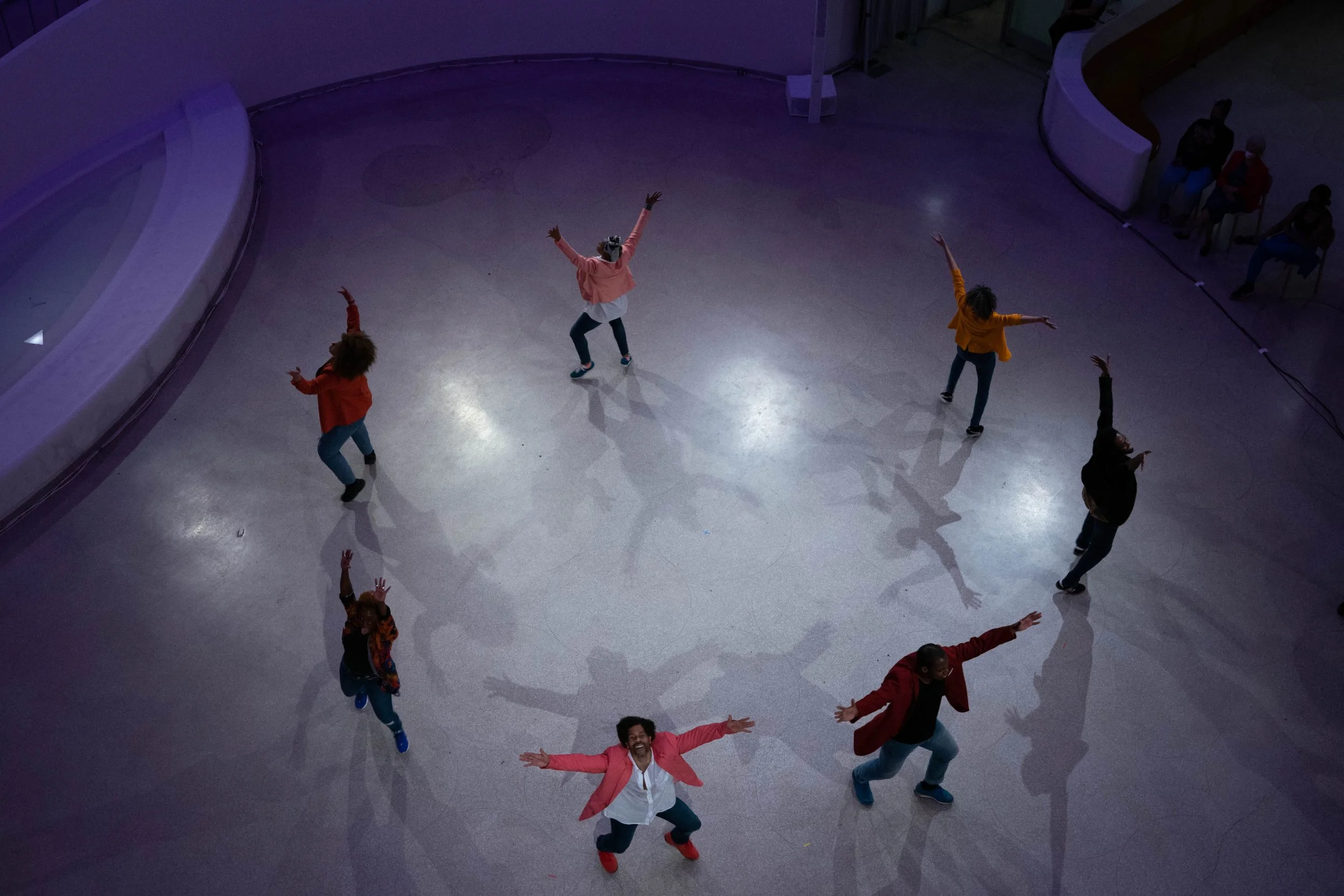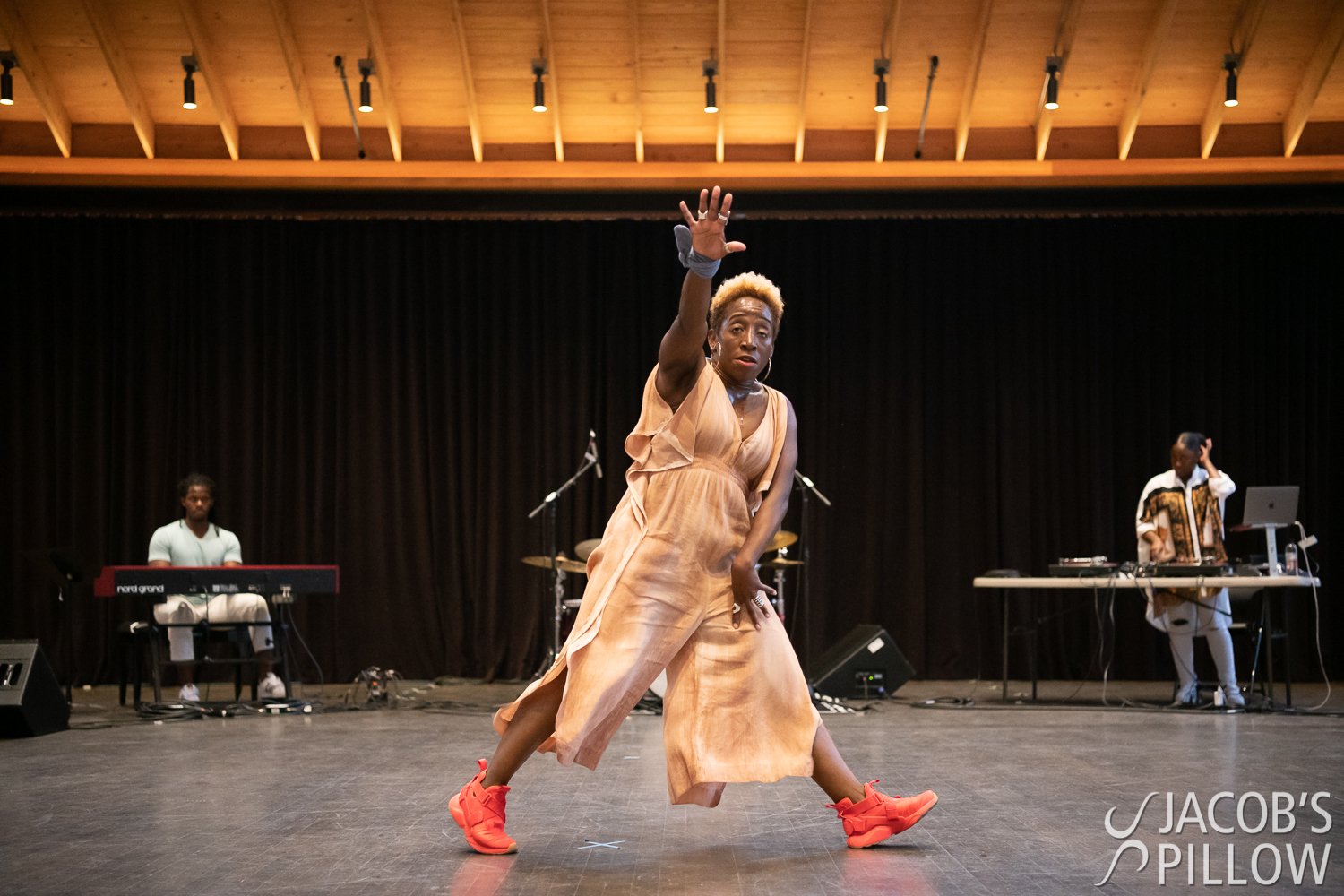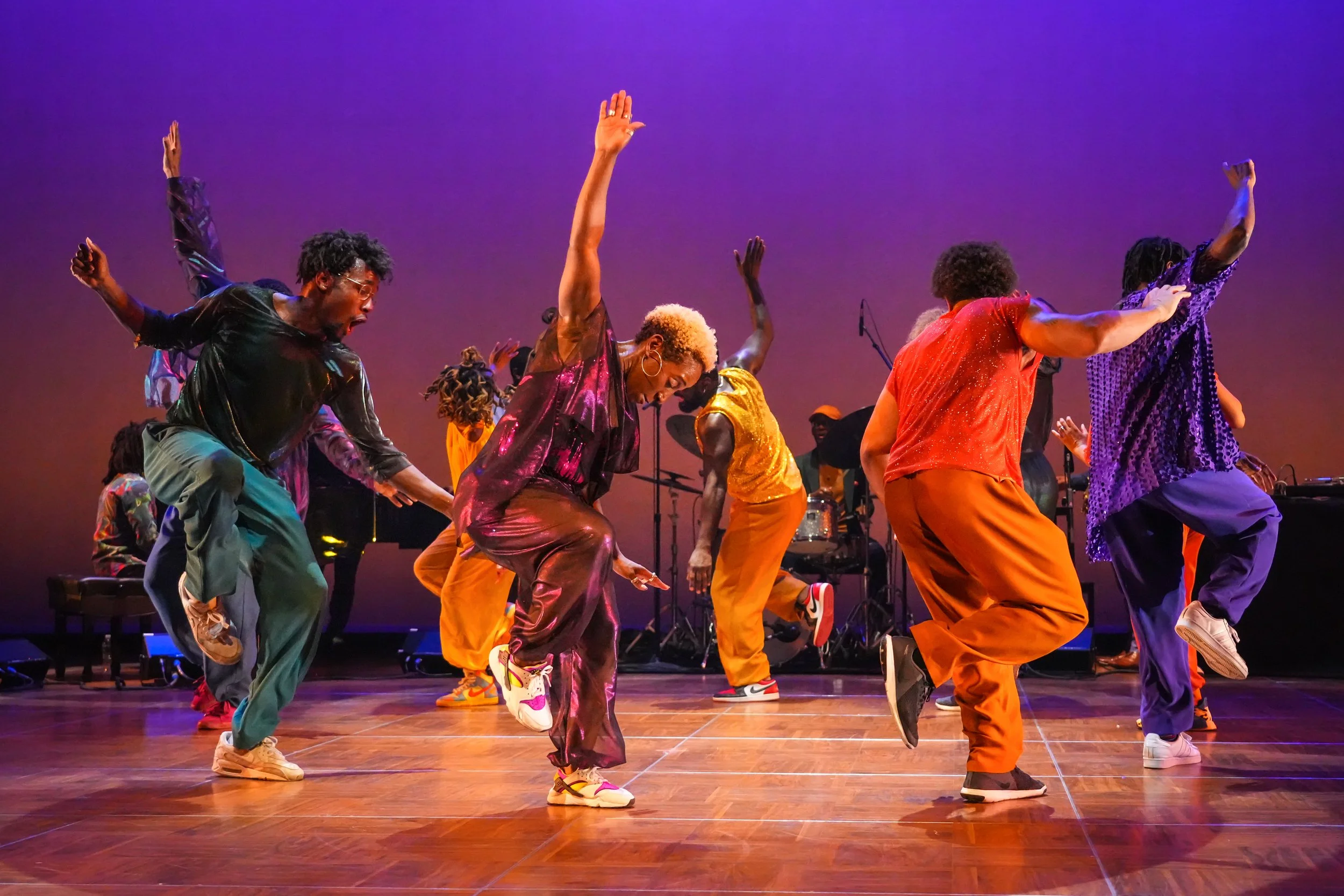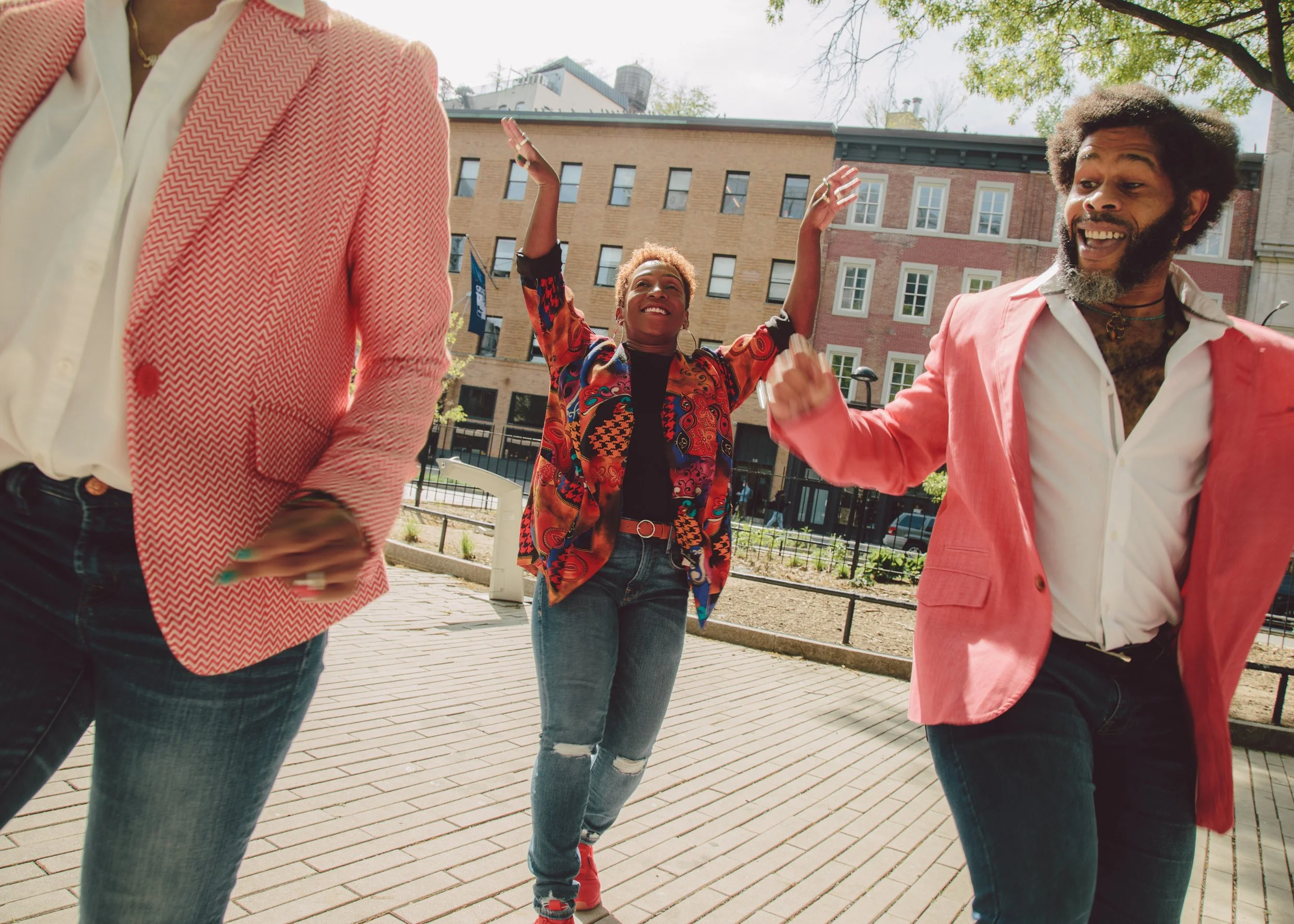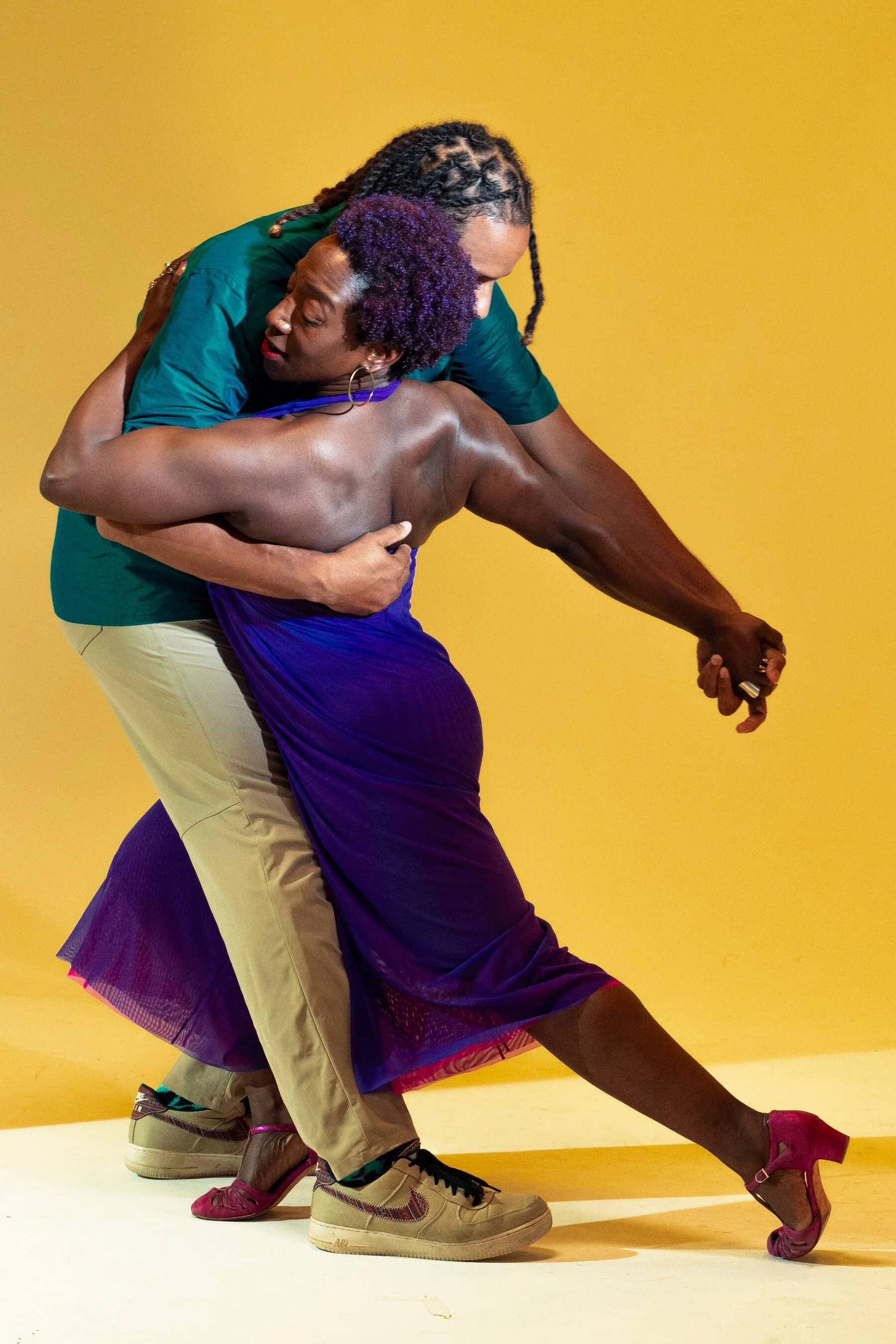
What People Are Saying
“A generous, joyful elixir of an experience.”
— Janine Parker, The Boston Globe
“Barnes is especially extraordinary for the way the past and the present can pass through her compact, nimble body.”
– Gia Kourlas, NY Times
“To watch LaTasha Barnes dance is to watch historical distance collapse.”
– Brian Seibert, NY Times
“ Barnes describes Black dance as a freedom practice, no less salient than the civil rights movement. “It is liberation,” she said. She also makes a distinction between choreographed dance and social dance, which is made up on the spot and therefore imbued with that sense of freedom. “It’s hope embodied,” she said. “Sometimes the truth that needs to be spoken doesn’t need to be verbal.” “ -
NY Time: Text by Imani Perry
Photographs by Elliott Jerome Brown Jr.
NYT: Keeping the Spirit of Harlem Dance Alive: LaTasha Barnes - Queen of Social Dance
The Jazz Continuum
LaTasha Barnes’ The Jazz Continuum centers the prolific artistry of Jazz music and dance as a cornerstone of Black American dance forms. Performed by an intergenerational cast of seven Black dancers and six Black musicians, this evening-length performance celebrates the pure joy of Black Jazz dance. Barnes reaches back nearly 100 years, making the connection between the dances that sprang from America’s Black jazz music to today’s house and hip hop dance vernacular. Each performer embodies their personal dance and music journeys, investigating the energetic and generative relationships within Jazz and Lindy Hop as they share their imaginings of its reapplication. The Jazz Continuum was supported and presented by Guggenheim Works & Process and Jacob’s Pillow Dance Festival in 2021.
Rooted Jazz Dance: Africanist Aesthetics and Equity in the Twenty-First Century
Rooted Jazz Dance brings together jazz dance scholars, practitioners, choreographers, and educators from across the United States and Canada with the goal of changing the course of practice in future generations. Contributors delve into the Africanist elements within jazz dance and discuss the role of Whiteness, including Eurocentric technique and ideology, in marginalizing African American vernacular dance, which has resulted in the prominence of Eurocentric jazz styles and the systemic erosion of the roots. These chapters offer strategies for teaching rooted jazz dance, examples for changing dance curricula, and artist perspectives on choreographing and performing jazz. Above all, they emphasize the importance of centering Africanist and African American principles, aesthetics, and values.




